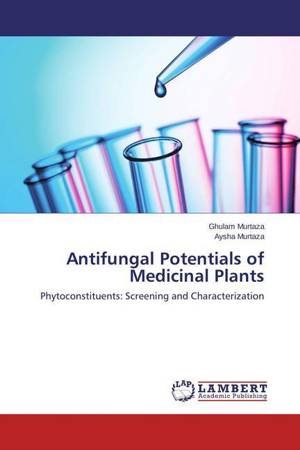
- Afhalen na 1 uur in een winkel met voorraad
- Gratis thuislevering in België vanaf € 30
- Ruim aanbod met 7 miljoen producten
- Afhalen na 1 uur in een winkel met voorraad
- Gratis thuislevering in België vanaf € 30
- Ruim aanbod met 7 miljoen producten
Zoeken
Antifungal Potentials of Medicinal Plants
Phytoconstituents: Screening and Characterization
Ghulam Murtaza, Aysha Murtaza
Paperback | Engels
€ 38,95
+ 77 punten
Omschrijving
Fungal infections have been increasing in humans for many years due to emerging resistance of fungi.One of the intimidating fungus is Candida albicans. It is opportunistic, dimorphic fungus commonly found in oropharyngeal and gastrointestinal tract of humans. It undergoes phenotypic switching between its yeast and hyaphal forms (dimorphism). An ideal antifungal is the one with less cytotoxicity and capable of inhibiting morphological switches of this fungus. Currently available antifungals are either too costly or have several side effects associated with them. Recent findings from our laboratory revealed that plants growing in harsh environmental conditions of deserts, possess biologically similar antifungal constituents which have much more efficacy than that of commercially available antifungals. The study revealed the great potential of medicinal plants growing in stressed environments of the desert, to be used for treatment of fungal infections. It further reflects a hope for the development of many more novel antifungal agents from such plants which in future may serve for the production of synthetically improved therapeutic agents, indigenously.
Specificaties
Betrokkenen
- Auteur(s):
- Uitgeverij:
Inhoud
- Aantal bladzijden:
- 84
- Taal:
- Engels
Eigenschappen
- Productcode (EAN):
- 9783659313752
- Verschijningsdatum:
- 9/11/2015
- Uitvoering:
- Paperback
- Afmetingen:
- 150 mm x 220 mm
- Gewicht:
- 136 g

Alleen bij Standaard Boekhandel
+ 77 punten op je klantenkaart van Standaard Boekhandel
Beoordelingen
We publiceren alleen reviews die voldoen aan de voorwaarden voor reviews. Bekijk onze voorwaarden voor reviews.











